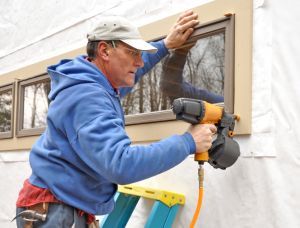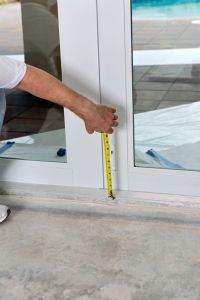How Does a Window Installation Work?
 Installing some beautiful new, energy-efficient windows is a popular enhancement among homeowners. They increase home security, improve home resale value and sellability, and help you save money on your monthly utility bills.
Installing some beautiful new, energy-efficient windows is a popular enhancement among homeowners. They increase home security, improve home resale value and sellability, and help you save money on your monthly utility bills.
A professional window installation requires special tools, materials and knowledge that ensure the job meets the windows’ warranty. Once the new windows arrive at your home, installers can typically finish the job in 2 or 3 days.
What is Your Window Scenario?
How new windows are installed depends on the type of window being installed and how the home is constructed.
New Windows, New Home
New construction windows have an exterior fin that fits over the subsiding and directly attaches to the house frame. The finish siding or trim covers the top of the fin. This type of installation is the most straightforward.
New Construction Windows, Older Home
New construction windows can be used to replace existing windows. However, replacing existing windows in this manner is more expensive than using retrofit windows because the installation is more labor-intensive.
Exterior siding must be removed around the original window opening to expose the frame beneath to which the construction window’s exterior fin attaches. Matching siding and trim must be cut, re-fitted and painted to gain a finished look.
New construction windows can be a good option if you are changing the sizes of the window openings, however.
Retrofit Windows
When window openings are not changing, retrofit windows are a cost-effective. The window trim and the house siding remain in place so that both labor and material costs are reduced.
The old windows are removed ithout disturbing the existing siding. The new window is attached on the inside to the house frame with screws. Matching, custom trim is installed on the outside.
Inspection Points to Watch
You’re free to periodically inspect the progress of your window install. Here’s what you can look for…
- Siding or trim outside of each new window’s border should not be visibly damaged.
- Look for signs of moisture damage in the house frame as each window is removed.
- Make sure waterproof sheet material is installed above and below each new window’s exterior fin or flange.
- See that new windows fit well and are level and plumb.
- Look for at least a 6 mm gap between the window and the frame header. This prevents transferring the weight of the roof or floors above to the window, which will deform it.
- Gaps between the new window frame and house frame must be filled with insulation or polyurethane foam.
- The gap between siding and exterior window frame must be filled with a flexible sealant, such as silicone or polyurethane based caulking.
- Inspect the exterior and interior walls and trim around each window carefully. Hairline cracks may indicate the window is not properly sealed against air infiltration.
- If, after installation, you notice interior water condensation between panes, the pane seals may be damaged and the pane or window must be replaced.
- If you feel drafts or cold spots after installation, this is a sign of air infiltration that must be corrected.
Confident in Your New Windows?
Don’t be shy about keeping an eye on the installation of your new windows. Good installation is important, and we want you to be certain of your investment. Inspect the work and let our installers know what you think. They’re always happy to receive constructive feedback.
The post How Does a Window Installation Work? appeared first on The Door Centre.















